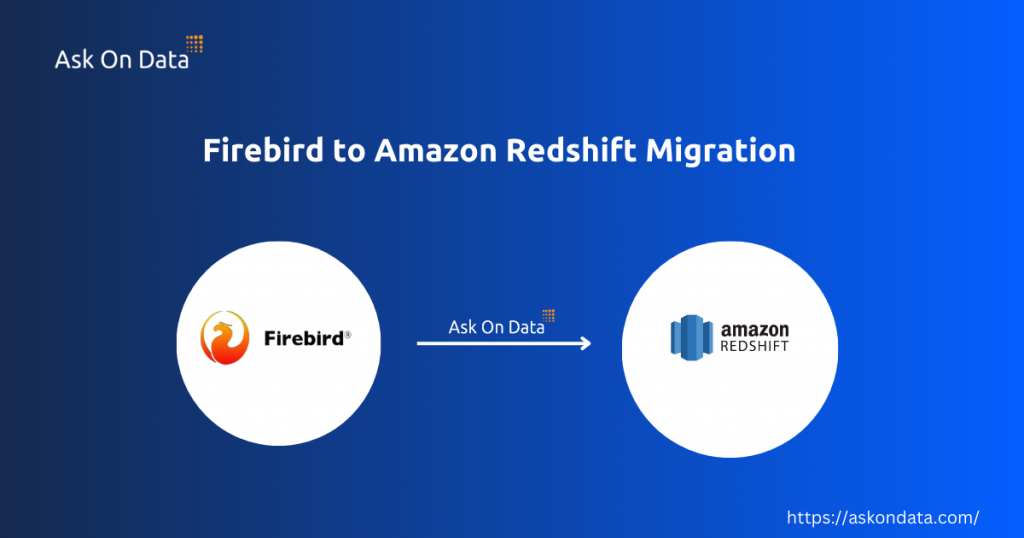
In this article, we explore the migration process from Firebird to Amazon Redshift, a crucial step for businesses seeking scalable, cloud-based data warehousing. We’ll delve into the challenges faced during migration, including data transformation and compatibility issues. Discover how to streamline this transition with best practices and essential tools. Learn the benefits of moving to Redshift, such as enhanced performance and advanced analytics capabilities. Join us as we navigate this important journey towards optimizing your data infrastructure.
What is Firebird
Firebird is a robust open-source relational database management system (RDBMS) renowned for its performance, scalability, and flexibility. Originating from the InterBase database, Firebird supports multiple platforms, including Windows, Linux, and macOS, making it versatile for various applications. It offers advanced SQL features and supports stored procedures, triggers, and views, enabling complex data operations. Firebird is lightweight, requiring minimal resources, which makes it ideal for both small embedded systems and large enterprise solutions. With its active community and continuous development, Firebird remains a reliable choice for developers seeking a powerful and efficient database solution.
What is Amazon Redshift
Amazon Redshift is a fully managed cloud data warehouse service by AWS, optimized for large-scale data storage and high-performance analytics. It supports complex queries on structured and semi-structured data, enabling businesses to gain deep insights quickly. With seamless scalability from gigabytes to petabytes, Redshift integrates effortlessly with numerous data sources and business intelligence tools. Key features include automated backups, robust encryption, and cost-effective pricing, making it an ideal solution for companies aiming to enhance their data infrastructure. Redshift empowers organizations with real-time analytics, driving data-driven decision-making and operational efficiency.
Advantages of Firebird to Amazon Redshift Migration
- Scalability: Seamlessly scale from gigabytes to petabytes as data needs grow.
- Performance: Experience high-speed query execution and optimized analytics.
- Managed Service: Reduce administrative tasks with automated backups and updates.
- Integration: Easily connect with AWS services and third-party tools for enhanced data processing.
- Security: Benefit from advanced security features, including encryption and fine-grained access control.
Method 1: Migrating Data from Firebird to Amazon Redshift Using the Manual Method
- Data Export: Begin by exporting data from Firebird using tools like gbak or custom scripts to generate CSV or SQL files.
- Data Cleaning: Clean and transform the exported data to match Amazon Redshift’s data types and schema requirements.
- Schema Creation: Create the corresponding tables and schema in Amazon Redshift using SQL commands to mirror the structure of the Firebird database.
- Data Loading: Use the COPY command in Redshift to load the cleaned CSV files into the newly created Redshift tables.
- Data Verification: Verify the accuracy and completeness of the data by running checks and comparing row counts and data integrity between Firebird and Redshift.
- Optimization: Optimize Redshift performance by configuring distribution keys, sort keys, and applying compression settings to the loaded tables.
Disadvantages of Migrating Data from Firebird to Amazon Redshift Using the Manual Method
- High Error Risk: Manual processes are prone to errors, requiring significant effort for data accuracy.
- Need to do this activity again and again for every table.
- Complex Data Transformation: Achieving necessary data transformations manually is challenging and time-consuming.
- Dependency on Technical Resources: Relies heavily on skilled technical resources for each migration step.
- No Automation: Lacks automation, making the process labor-intensive and inefficient.
- Limited Scalability: Each table requires individual attention, hindering scalability.
- Error Handling: No automated methods for handling errors or providing notifications.
- No Rollback Mechanism: Lacks automated rollback options in case of migration failures.
- Logging and Data Tracking: Absence of automated methods for logging and tracking data transfer.
- Incremental Load Challenges: Does not support automated incremental loads, requiring manual intervention for updates.
Method 2: Migrating Data from Firebird to Amazon Redshift Using ETL Tools
There are certain advantages in case if you use an ETL tool to migrate the data
- Data Extraction: ETL tools automate the extraction of data from Firebird, ensuring a streamlined and error-free process.
- Data Transformation: These tools provide robust capabilities to transform data accurately, making it compatible with Amazon Redshift.
- Data Loading: ETL tools efficiently load transformed data into Redshift, reducing manual effort and ensuring data integrity.
- Error Handling: Built-in error handling features detect and manage errors automatically, ensuring data integrity and reliability.
- Automation and Scheduling: ETL tools support automated scheduling of regular data migrations, ensuring consistency and reducing manual intervention.
- Scalability and Efficiency: These solutions handle large datasets and multiple tables efficiently, providing a scalable approach to data migration.
Challenges of Using ETL Tools for Data Migration:
- Complex Setup and Configuration: On-premise deployments require intricate setup and significant expertise.
- Steep Learning Curve: Effective use of ETL tools demands extensive training and familiarity.
- Dependency on Technical Resources: Relies heavily on skilled technical resources or data engineers.
- Cost: Implementing and maintaining ETL tools can be expensive.
- Scalability Issues: Some ETL tools struggle with scalability when handling very large datasets.
- Limited Customization: ETL tools may offer restricted customization options for unique data needs.
- Maintenance Overhead: Regular maintenance and updates add to operational overhead.
Why Ask On Data is the Best Tool for Migrating Data from Firebird to Amazon Redshift
- User-Friendly Interface: Ask On Data offers an intuitive interface that simplifies the migration process, making it accessible even for non-technical users.
- Seamless Integration: The tool integrates effortlessly with both Firebird and Amazon Redshift, ensuring smooth data transfer with minimal configuration.
- Automated Data Transformation: Ask On Data automatically transforms data to match Redshift’s schema, reducing manual intervention and potential errors.
- Real-Time Monitoring: Users can monitor the data migration process in real time, ensuring transparency and quick troubleshooting if needed.
- Cost-Effective Solution: Ask On Data provides an affordable alternative, offering powerful migration capabilities without the high costs associated with traditional ETL tools.
Usage of Ask On Data : A chat based AI powered Data Engineering Tool
Ask On Data is world’s first chat based AI powered data engineering tool. It is present as a free open source version as well as paid version. In free open source version, you can download from Github and deploy on your own servers, whereas with enterprise version, you can use Ask On Data as a managed service.
Advantages of using Ask On Data
- Built using advanced AI and LLM, hence there is no learning curve.
- Simply type and you can do the required transformations like cleaning, wrangling, transformations and loading
- No dependence on technical resources
- Super fast to implement (at the speed of typing)
- No technical knowledge required to use
Below are the steps to do the data migration activity
Step 1: Connect to Firebird(which acts as source)
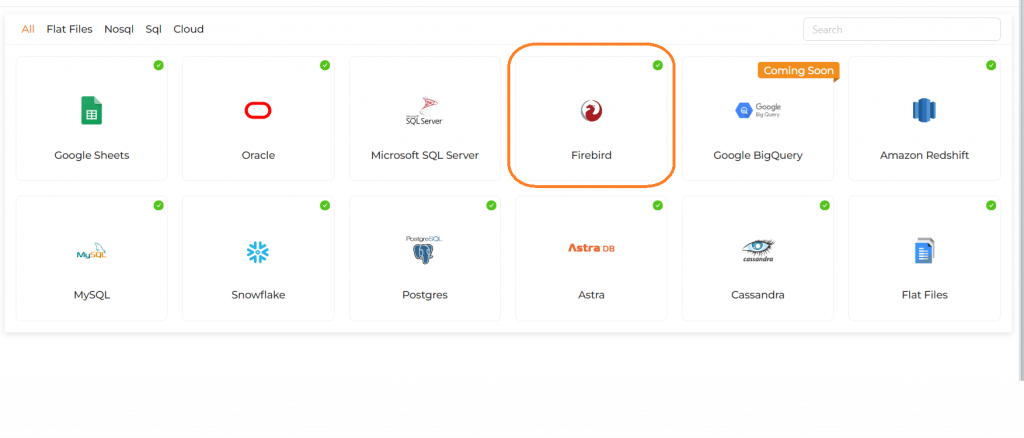
Step 2 : Connect to Redshit (which acts as target)
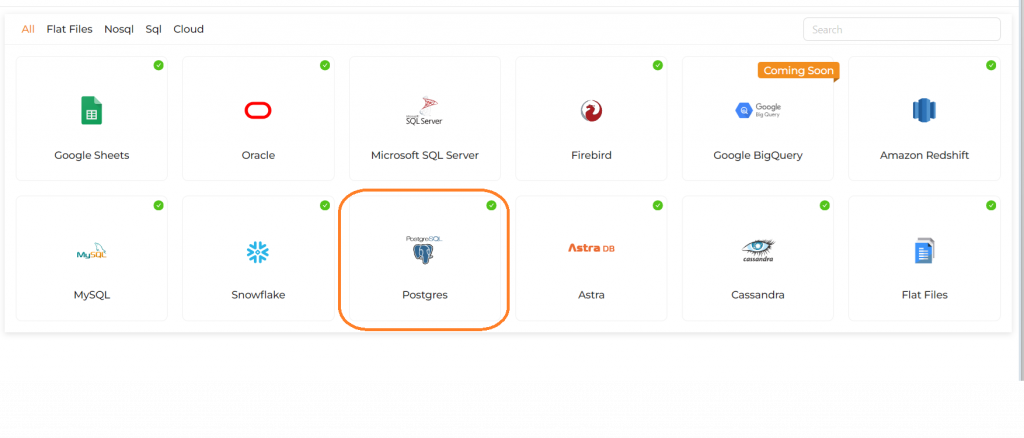
Step 3: Create a new job. Select your source (Firebird) and select which all tables you would like to migrate.
Step 4 (OPTIONAL): If you would like to do any other tasks like data type conversion, data cleaning, transformations, calculations those also you can instruct to do in natural English. NO knowledge of SQL or python or spark etc required.
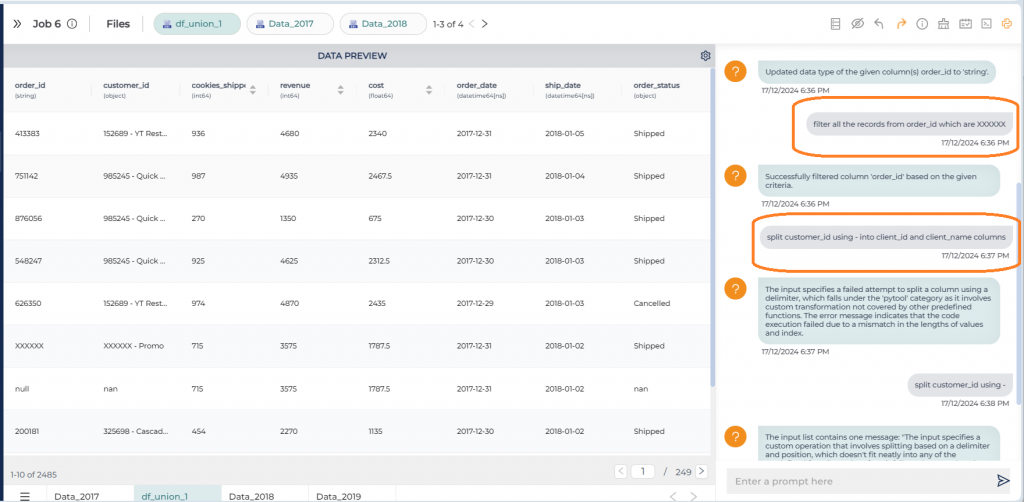
Step 5: Orchestrate/schedule this. While scheduling you can run it as one time load, or change data capture or truncate and load etc.
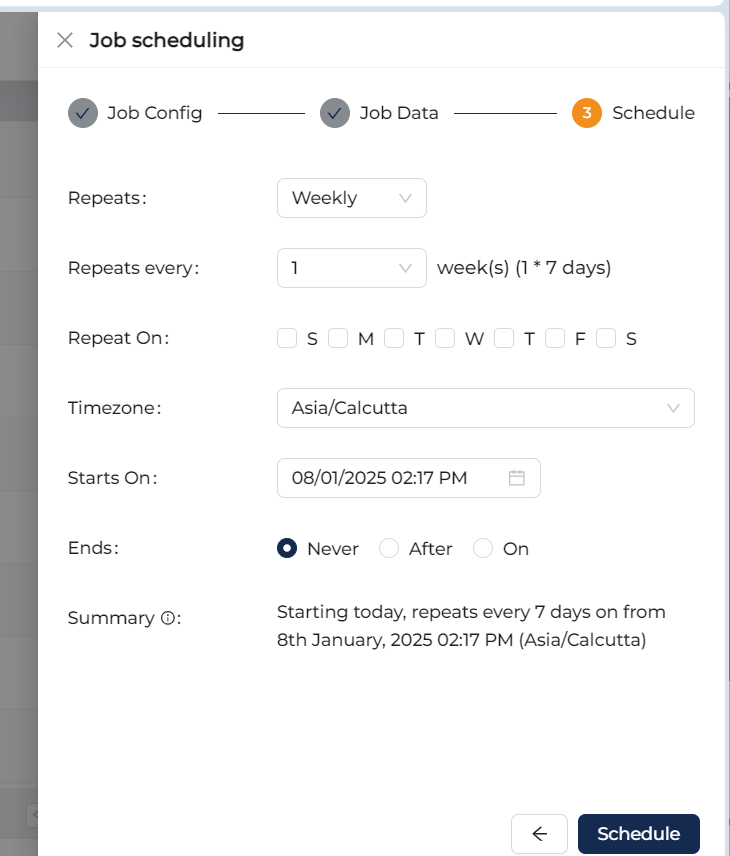
For more advanced users, Ask On Data is also providing options to write SQL, edit YAML, write PySpark code etc.
There are other functionalities like error logging, notifications, monitoring, logs etc which can provide more information like the amount of data transferred, logs, any error information if the job did not run and other kind of monitoring information etc.
Trying Ask On Data
You can reach out to us on mailto:support@askondata.com for a demo, POC, discussion and further pricing information. You can make use of our managed services or you can also download and install on your own servers our community edition from Github.
